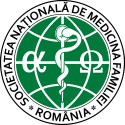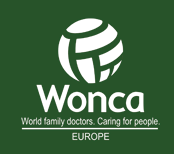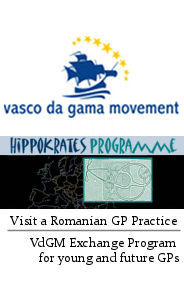Health care
Health care in Romania is organized in two different systems.
– The public system which is financed mainly through social health insurance contributions which are mandatory, with some exemptions for children, students, the unemployed and low income persons. Employees contribute 5.5% of their monthly wage and employers add an extra 5.2% for each employee. The National Health Insurance House (CNAS) administers all the funding and is responsible for planning and purchasing , through its county branches, health services from both public and private hospitals, laboratories, pharmacies, ambulatory care specialists, GPs etc.
– A smaller private system where patients have to pay out of their own pocket for each health service they request. There are no large private insurance funds, only small private schemes, mainly connected to life insurance agencies or private health clinics. Private health services are used only by a small percentage of the population, as most use the public system services, which are free of charge at the point of delivery.
Between 2011-2012 a new health reform and Health Law was discussed and developed by the Government. The main change of this reform was the introduction of private health insurance companies, alongside or instead of the singular National Health Insurance House. The project was withdrawn in early 2012 following street protests against the privatization of the emergency health system.
More details about the healthcare system in Romania can be found here and in the reports at the end of this article.
General practice in Romania was recognized as a clinical specialty in 1990, with a vocational training postgraduate program which lasts currently for 4 years. In 1999, general practice became known as family medicine, thus marking the primary health care reform in Romania – GPs/family doctors became independent professionals, self-employed and were no longer Government employees. Since 1999, GPs work under contract with the county branches of the National Health Insurance House (CNAS), receiving payment for the health services they provide to all those insured under the social health insurance scheme.
Romanian GPs have a gatekeeper role for the public system (CNAS), but not for the private system. This means that those benefiting from free services can’t access any other service unless they are seen first by their GP. Patients who choose the private system don’t need to see a GP first, as they can access any service through direct payment. Government subsidized prescriptions are available only in the public system and there is a co-pay of 10-80%..
Most patients in Romania are registered with a GP of their choice, without limitations regarding the area in which they live. Most choose a GP close to home and don’t change the GP for many years. However, patients can change GPs after a 6 month minimum period.
There are 11400 GPs in Romania working under a contract with CNAS. The average list of registered patients is 1800, with some practices caring for just 800 patients (minimum accepted limit for a contract with the CNAS) while about 20% of practices look after over 2200 patients. GPs are a third of the total number of doctors in Romania. Most GPs work in single-handed practices, especially in rural areas. In urban areas there usually are larger primary care clinics, but GPs still work in solo practices, with at least one nurse for each GP (a requirement of the contract with the CNAS). Apart from GPs who own their own practice, there are also salaried GPs who work for GPs with solo practices or for large private clinics. Romanian GPs can also work for Emergency Departments, after a 6-month training in Emergency Medicine, but this is not common.
The number of GP consultations per year is approx. 60 million and an added 2.5 million home visits. Same day consultations are usually available and patients are required by law (since 2010) to make appointments. The referral rate to secondary and tertiary care is 8-12% (rural-urban). According to CNAS reports in 2014, a patient generally visits a GP 3 times/year. In secondary care (polyclinics) patients see a doctor only once/year. One in 5 patients goes to the hospital per year for a day visit and one in 8 patients is admitted to the hospital per year.
About half of GPs use computers in their daily activity for record keeping and all GPs use computers to reports to the CNAS, for reimbursement.
Since July 2012 a national e-prescription system is in use, covering only subsidized drugs.
Since April 2014 a centralised electronic patient health record developed by CNAS with funding from the European Commission is available but barely used by patients and doctors (SNMF Position Paper on EHR, 2014). Since November 2016 this EHR must be used by all healthcare providers, in the public and private sector, except Emergency Departments, imaging (MRI, CT) and laboratory testing providers. Further developments of the national EHR promise to include also these providers.
Since May 2015 a national electronic health card system is in use.
Regarding payment, since 2010 a change in the per capita / pay-per-service system was made, switching from per-capita to pay per service. GPs now receive 50% of the income from pay-for-service and 50% for the patients registered with their practice. Income is low, as is the budget of the entire health care system in Romania (only 4.2% of the GDP in 2016). General practice in Romania receives only 6% of the total health expenditure (2015). Pay-for-service is limited by the government imposed 15′ consultation time, meaning a GP working for 5 hours doing office consultations and 2 hours doing home visits can only receive pay under the contract with the CNAS for a maximum of 20 consultations/day and 2 home visit/day. GPs who care for more than 2200 patients are allowed to work an extra office hour. Most GP practices aren’t open during weekends or after normal working hours. Out-of-hours care is assigned to dedicated centers with GPs, usually in rural areas. Some rural areas aren’t covered by GPs, due to lack of involvement of the local authorities. An important percentage of practices, especially in rural areas, don’t have ECGs, ultrasound or basic lab tests equipment on the premises or easy acces for patients to these.
Romanian GPs are organized since 1991 in a professional association called the National Society of Family Medicine (SNMF), WONCA member since 1994. Membership is not mandatory, but each year more GPs join the County Associations (AMF) which are members of the National Society. SNMF organizes through its county associations 2 National and 8 Regional Conferences each year, over 30 workshops, courses, symposia, publishes a handbook each year distributed for free to all GPs, developed an eLearning platform for GPs and a strong communication network: e-mail, telephone, SMS, newsletter, website, online message board (3300 members, 500 messages/month). Romania is also represented in most WONCA networks – EURACT, EGPRN, EURIPA and VdGM.
Society website is www.snmf.eu.(English version) / www.snmf.ro (Romanian version)
Medical education
Romania has 12 medical universities, each with its own Family Medicine Department and postgraduate 4-year GP training program. Medical school duration is 6 years and graduates must pass a national MCQ exam to gain access to any specialty training program. Specialties can be chosen according to the results from the MCQ exam. Full licence to practice is gained only after finishing the training program and passing the specialty exam. Each year approx. 4500 students graduate and there are about 3500 specialty training posts available each year. About 150 training posts are in Family Medicine. In 2004, 2009 and 2010, however, 25% of the training posts have been in Family Medicine.
The GP specialty training program has a duration of 4 years and consists of training in the GP office in the first 6 months and last 18 months of training. This can be done in urban and rural GP practices, but is often done in the same city with the medical university responsible for training. Clinical training in hospital posts is divided into rotations in internal medicine (4 months), peadiatrics (4 1/2 months), surgery, ob-gyn, oncology (2 months each), dermatology, psychiatry, neurology, diabetes, infectious diseases, epidemiology & management (1 month each), bioethics (2 weeks).
In order to become a GP specialist and gain a full license to practice, trainees must pass a written exam and a clinical skills exam (assessment of a real life patient – one adult and one child) in a hospital setting.
The training curriculum can be seen here. (in Romanian, .pdf)
––
Download: WHO Europe Report – Evaluation of structure and provision of primary care in Romania, March 2012
Download: Oxford Policy Management – Technical Assistance for Project Management Unit APL 2, within the Ministry of Health of Romania, in order to develop a Strategy for Primary Health Care in Underserved Areas and the Related Action Plan, February 2012
(According to June 2014 World Bank Report status of this Strategy is as follows: „[Indicator] Achieved. The Strategy 2012-2020 and related Action Plan were formally approved by the MoH on February 27, 2012 and were forwarded to the Health Care and Public Policies Directorate of the MoH to be adopted through Government Decision in March 2012. According to the MoH Report of March 15, 2013 on the implementation status of the Action Plan of the National Reform Programs 2011-2013, the Strategy was revised to observe the provisions of Government Decision No. 870/2006. Expected to be approved within the framework of the Health Sector Reform Strategy for the next period of the EU financing exercise (2014-2020).)
Download: NICE International Final Report for the MoH of Romania, January 2012
Download: World Bank – Romania Functional Review HEALTH SECTOR Final Report, May 2011
See also: WHO Health Systems in Transition – Romania, 2000 and 2008
Download: Position Paper on Electronic Health Record Development and Implementation in Romania – SNMF, September 2014
See also: Recruitment and Retention of the Health Workforce in Europe (2015) – Report produced under the EU Consumer Programme (2014-2020) on behalf of the European Commission
––
SNMF documents:





